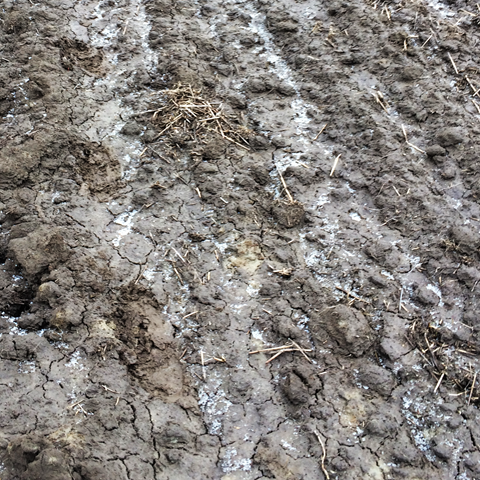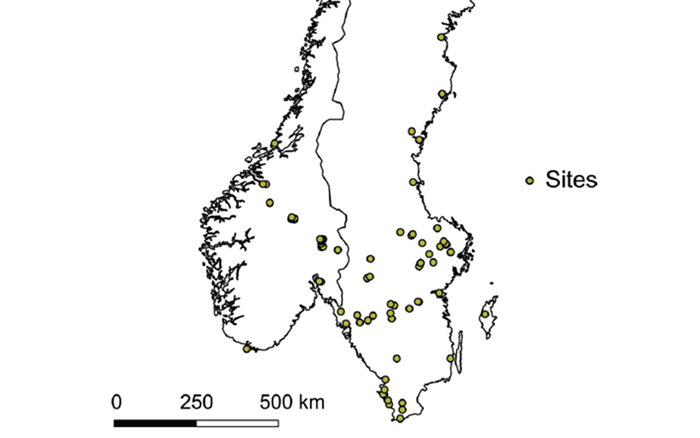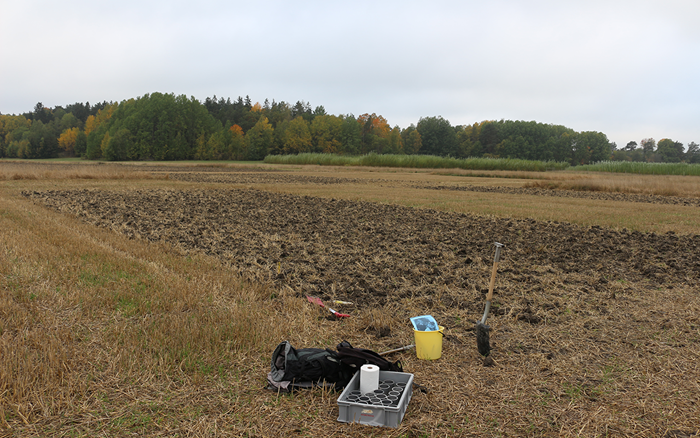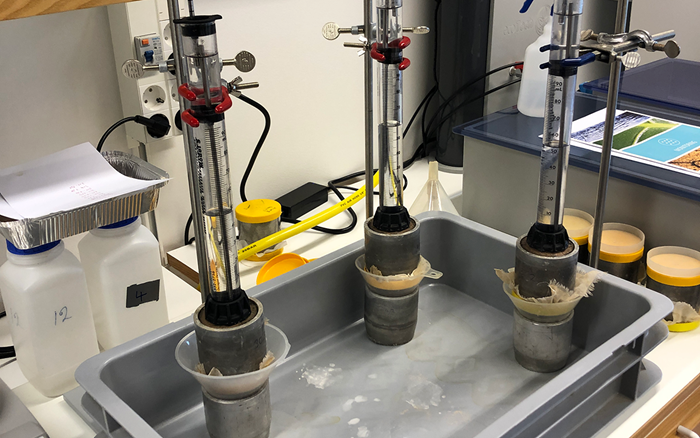Today, the majority of Swedish food production takes place in southern Sweden. However, with our climate getting warmer in the future, we can expect food production in Sweden to move northwards where growing conditions are improving. On top of this, agricultural land in the north may have to compensate for yield losses in other parts of the world in the future, where the climate is becoming too warm to keep yields at current levels.
- 10 to 30 years from now, we will have much less snow in central and also parts of northern Sweden. Less snow on the ground means that changes in soil temperature are likely to occur more often than at present, leading to more freezing and thawing events in the soil. According to our research results, these fluctuations around zero degrees can benefit the physical quality of soils and therefore also food production, says Tobias Klöffel.
When the soil freezes and thaws, new pathways develop in the soil while others are connected. This makes it easier for soil-living organisms and crop roots to explore the soil. In addition, excess water can more easily infiltrate the soil and be used by plants when needed, especially during droughts.
In his thesis, Tobias Klöffel has studied how soils in Sweden and Norway are affected by climate to derive potential consequences with climate change. In particular, he has studied changes in soil structure, that is the spatial composition of pathways, minerals and organic matter in the soil. A total of 89 sites have been examined, including outside Umeå and Luleå.
The results of the thesis showed that the soil structure in more southerly located agricultural land in Sweden was more deteriorated, compared to more northerly located land. The climate is warmer and wetter in the south while it is colder and drier in the north. So the climate seems to affect the soil structure, especially in the deeper soil layers.
- We do not really know what the reason is, but it may have to do with how we take care of the soil when we cultivate it. Intensive agriculture and the use of heavy machinery in the south of Sweden have probably contributed to the deterioration of structure in the south and thus reduced the resilience towards extreme weather events. If we want to keep fertile soils in the north that can withstand severe weather events, we need to protect their resilience from the start, says Tobias Klöffel.
Acccording to Tobias Klöffel, this requires framing practices that preserve the structure of the soil. How such farming practices can look like is currently investigated by many researchers, including ones at SLU. One important aspect, however, is to keep relatively high contents of organic matter in the soil, which benefits soil structure in multiple ways.
Tobias Klöffel believes that this is a social issue that affects us all. Agriculture needs to be able to produce food and protect the soil at the same time, but this requires action at the societal and political level.
- Going forward, it is important to understand how we can develop agriculture in northern Sweden without damaging the structure of the soil and its ability to handle water. This is a very difficult question that I believe requires an interdisciplinary approach, says Tobias Klöffel.
The PhD Thesis
Soil structure and water functions in agricultural soils of the temperate-boreal zone in a changing climate
Tobias Klöffel defended his thesis on February 1, 2024.




